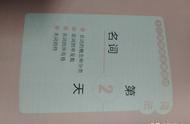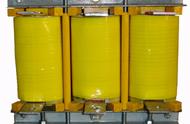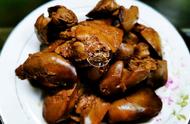[语境中体悟用法]
朗读下面短文,体会、领悟加黑连词的用法及引导的状语从句的类型。
My mother was cooking in the kitchen while① I was doing my school assignments. As soon as②I finished my homework, I went to get some water to drink. Then the doorbell rang. However, my sister unlocked the door before③I could open it. We were surprised the moment④we saw her because⑤ her clothes and face were terribly dirty.She looked much poorer than⑥we expected. Since⑦ we didn't know what had happened to her, we stood there and waited for my sister's story.We wouldn't leave unless⑧ my sister told us all about it.After⑨my sister got changed, she told us that she fell into a ditch when⑩ she walked on a path on her way to my uncle's home in the countryside. She couldn't get out of the ditch.Although⑪she cried for help, no one could hear her. She tried to climb out of it, but, however⑫hard she tried, she failed to escape from it.As⑬time went by, she got worried. After several vain attempts she had to stand where⑭ she was and waited until⑮ a boy student passed by and gave her a hand. The boy reached her a long rope and told her to climb with the rope.She did as⑯the boy told, so⑰ she came out.My sister also warned us to be careful when walking⑱ on a path even_though/if⑲ we are in a great hurry.That's true. We should mind our step so_that⑳ we can ensure our safety.
[用法体悟]
①while引导时间状语从句,强调主从句动作同时进行,意为“当……时候”。
②as soon as引导时间状语从句,表示“一……就……”。
③before引导时间状语从句,表示“还没来得及……就……”。
④名词词组如the moment/the second/the day/the first time/next time ...等可以用来引导时间状语从句。
⑤because引导原因状语从句。如果后接名词性短语表示原因,则用because of引导。
⑥than引导比较状语从句。
⑦对大家已知的事实提供理由或背景时,常用since引导,意思是“既然”。其引导的原因状语从句多在主句之前。
⑧unless=if ...not,有“除非,如果不”之意,引导条件状语从句。
⑨after引导时间状语从句。
⑩when表示“当……时”,引导时间状语从句。
⑪引导让步状语从句时,可以用although或though,主句可以与副词still连用,但不能再与连词but连用。
⑫however引导让步状语从句时,相当于no matter how。
⑬引导时间状语从句,表示“随着”时,只能用as。
⑭引导地点状语从句时,用where/wherever,表示“在……的地方”。
⑮until引导时间状语从句,表示“直到……”,主句谓语需用延续性动词。
⑯as引导方式状语从句,意思是“按照,像……那样”。
⑰so引导结果状语从句。
⑱when doing ...为时间状语从句的省略形式,当从句主语与主句主语一致且从句谓语中含有be动词时,可省略从句主语与be动词,构成省略形式。
⑲even though/if引导让步状语从句,表示“即使,尽管”。
⑳so that“以便,为了”引导目的状语从句,可替换为in order that。
[系统中整合规则]
(一)状语从句的连词
从句 | 连词 |
时间状语从句 | when, while, as, till/until, before, after, since, directly, the moment/instant, each/every time, whenever, once, as soon as等 |
地点状语从句 | where, wherever等 |
条件状语从句 | if, unless, providing (that), as long as, on condition that, in case等 |
让步状语从句 | though, although, even if/though, as, while, whatever, whenever, wherever, however, no matter+疑问词等 |
原因状语从句 | because, since, as, now that, seeing that, considering that, in that等 |
目的状语从句 | so that(为了), lest, in case, for fear that, in order that等 |
结果状语从句 | so that(因此), so/such ...that ...等 |
比较状语从句 | as ... as ..., than等 |
方式状语从句 | as if, as though, as等 |
(二)时间状语从句的易混点
1.when, while与as引导的时间状语从句
连词 | 从句的谓语动词 | 用法 |
when | 延续性动词;非延续性动词 | 从句的动作和主句的动作可以同时发生,也可以先后发生 |
while | 延续性动词 | 从句的动作与主句的动作同时发生 |
as | 延续性动词 | 强调主从句动作相伴发生,可译为“一边……一边……;随着” |
2.before与since引导的时间状语从句
连词 | 词义 | 常用句式 |
before | 在……之前; 还没来得及……就……; ……才……; 趁着…… | It will (not) be+一段时间+before ... “(没有)过……(时间)就……” It was not/won't be long before ...“不久……就……” It was+时间段+before ... “过了……(时间)才……” |
since | 自从……以来 | It is/has been+一段时间+since ...(从句用一般过去时) |
(三)结果状语从句的易错点
so ...that ...和such ...that ...引导结果状语从句,表示“如此……以至于……”。结构形式如下:
such+a/an+形容词+可数名词单数+that从句(+that从句)
[集训中明晰考点]
考点1 引导时间状语从句的连词
1.Today his hobby has developed into the website postcrossing.com, a social network that has grown to 575,217 registered users in 214 countries and regions ________ he started it 10 years ago.
解析:since 根据句意和时态可知空处引导时间状语从句,表示“自从……”,故填since。
2.I waited patiently ________ the oil was hot.
解析:until/till 此处意为“耐心地等待,直到油热起来”,应用until/till引导时间状语从句。
3.________ he asked the villagers on the banks of the river where he could find the legendary (传奇的) artist, they smiled and pointed down the river.
解析:When/As 空处引导时间状语从句,表示“当……时”,故填When/As。
考点2 引导让步状语从句的连词
1.I also water the flowers in the yard and tidy up my own bedroom ________ necessary.
解析:whenever 句意:我也给院子里的花浇水,必要时整理自己的卧室。根据句意,此处应用whenever引导让步状语从句。
2.Needless to say, I suffered a lot.But I know ________ I have to face in my life I was there and I survived.
解析:whatever 第二句句意:但是我知道,无论在生活中要面对什么,我都在那里,并且挺过来了。根据句式结构和句意可知,应用whatever引导让步状语从句。
3.________ he could give her sympathy, any practical help was almost beyond him.
解析:Although/Though/While 句意:尽管他能给予她同情,但任何实际的帮助几乎都是他力所不及的。根据句意可知,前后句之间存在让步关系,表示“尽管”,故用Although/Though/While引导让步状语从句。
4.A pair of red shoes — ________ they are for sports, dances or just fashion — is a musthave for every Chinese woman's shoe collection.
解析:whether 句意:一双红色的鞋子,不管是为了运动、跳舞,还是仅仅为了时尚,是每一位中国女性鞋子收藏中的必备品。根据句意可知,此处whether ...or ...引导让步状语从句,故填whether。
考点3 引导条件状语从句的连词
1.Tom is so independent that he never asks his parents' opinion ________ he wants their support.
解析:unless 句意:汤姆如此独立,以至于他从来都不征求父母的意见,除非他想得到他们的支持。根据语境可知,这里用从属连词unless“除非”引导条件状语从句。
2.________ we don't stop climate change, many animals and plants in the world will be gone.
解析:If 句意:如果我们不阻止气候变化,世界上的许多动植物将会消失。根据句意可知,此处应该用 if 引导条件状语从句,表示主句内容发生的条件。
考点4 引导结果状语从句的连词
1.His job is to sit beside the pianist and turn the pages of the score ________ the musician doesn't have to break the flow of sound by doing it themselves.
解析:so 分析句式结构可知,空格处应填连词;根据两句之间的逻辑关系可知,第二句话为第一句的结果,故填连词so。
2.On our way to the house, it was raining ________ hard that we couldn't help wondering how long it would take to get there.
解析:so 根据空格后的hard以及其后的that从句可知,此句含“so ... that ...”引导的结果状语从句,故填so。
3.Such an honest person is he __________ you can turn to him when you are in trouble.
解析:that 句意:他是如此诚实的一个人,以至于你可以在困难时向他求助。根据句意和句子结构可知,此处考查结果状语从句such ...that ...,故填that。
4.It was ________ nice weather that we were able to have lunch in the garden.
解析:such 句意:天气这么好,我们能在花园里吃午饭。根据句意及句子结构可知,本题考查“such+adj.+名词+that从句”,故填such。
考点5 引导地点、原因、方式、目的状语从句的连词
1.For postcrossing to work worldwide, a common communication language is needed so ________ everyone can understand each other.
解析:that 根据句意和从句中的情态动词“can”可知,该从句为目的状语从句,so that“以便,为的是”相当于“in order that”。
2.I just didn't know what to say, ________ I never thought seeing my mother would ever come true.
解析:because 根据语境可知,设空处前后两部分是因果关系,空后表示原因,故填because。
3.Half an hour later, Lucy still couldn't get a taxi ________ the bus had dropped her.
解析:where 句意:过了半个小时,Lucy还没有在下车的地方打到的士。where“在哪里;……的地方”。根据空格前后句意可知,此处指公共汽车放下她的地方,故此处使用where引导地点状语从句,表示“等的士的地方”。
4.Jack wasn't saying anything, but the teacher smiled at him as ________ he had done something very clever.
解析:if/though 句意:Jack什么也没说,但老师向他笑了笑,好像他做了件聪明的事情一样。as if/though意为“好像”,引导方式状语从句。
[自测中查漏补缺]
Ⅰ.单句语法填空
1.She asked for the woman's name and address so that she could repay her.
2.While/Though/Although Mary loved flowers, neither she nor her husband was known as a gardener.
3.Over time, as/when the population grew, people began cutting food into small pieces so it would cook more quickly.
4.They are pretending to keep a healthy and wise attitude towards failure simply because they are incapable (无能力的) of succeeding.
5.Our English teacher explains English grammar so clearly that all the students can understand.
6.No sooner had I seen him than I asked him about the matter.
7.Now that everyone makes mistakes, you shouldn't always criticize him.
8.He got so little money that his family had to live on welfare.
9.Fail as/though I did, I would refuse to give up and instead I would keep moving.
10.Unless some extra money is found, the theater will close down.
Ⅱ.完成句子
1.Whatever_decision_he_made,_I would support it.
无论他作出什么决定,我都会支持的。
2.We will manage to accomplish the task in time even_though_it_is_difficult.
纵然任务艰巨,我们也要设法及时完成。
3.Dad brought a notebook along to the beach, in_case_he_was_seized by sudden inspiration.
爸爸带了一个笔记本去海滩,以防突然有了灵感可以记录下来。
4.Whether_or_not_we're_successful,_we can be sure that we did our best.
不管成功与否,我们确已尽了最大努力。
5.Hardly_had_I_heard_the_exciting_news/I_had_hardly_heard_the_exciting_news when I jumped with joy.
一听到那个激动人心的好消息,我就高兴地跳了起来。
Ⅲ.语法填空
Pottery (陶器) may be the oldest artwork of human beings.As far back as more than 8,000 years ago, people in China first made pottery by mixing clay with water and baking it __1__ it held its shape.Ancient people attached the word “pottery” to their discovery and used it to create various vessels and tools __2__ (improve) the quality of life.
As time passed, the technique became perfect.Different kinds of pottery appeared in different times and regions.For example, during the Tang Dynasty (618-907), the pieces __3__ (create) by adding various metal oxide and baking __4__ a low temperature.The pottery would appear to be light yellow, reddish brown and light green.__5__ (prefer) by many foreigners to the region, the tricolor glazed pottery (唐三彩) had been transported all over the world.
Purple clay pottery won __6__ great reputation for the next hundreds of years.As early as the Song Dynasty (960-1279), people found that purple clay teapots looked much more graceful than those of other __7__ (material).In the Ming and Qing Dynasties, people __8__ liked drinking tea held firm to the __9__ (believe) that tea in the purple clay pot smelled better and could retain the original quality; these teapots transferred heat much __10__ (slow) and were more endurable of heat.Modern people still delight in this classic fashion ideal.
语篇解读:本文是一篇说明文。文章主要介绍了中国制作陶器的历史和陶器的演变过程。
1.until 考查状语从句。句意:早在8 000多年前,中国人就开始制作陶器了,他们将黏土与水混合,然后将其烘烤成形。此处引导时间状语从句,表示“直到”应用连词until。故填until。
2.to improve 考查非谓语动词。分析句子结构可知,improve在句中应用非谓语动词形式,此处作目的状语,应用不定式。故填to improve。
3.were created 考查动词的时态、语态和主谓一致。根据上文“during the Tang Dynasty”可知应用一般过去时,主语与谓语动词之间构成被动关系,故用一般过去时的被动语态,主语为 the pieces,谓语要用复数形式。故填were created。
4.at 考查介词。根据语境可知,此处表示“在低温下”,应用短语at a low temperature。故填at。
5.Preferred 考查非谓语动词。分析句子结构可知,prefer在句中应用非谓语动词形式,与逻辑主语the tricolor glazed pottery之间构成被动关系,故用过去分词作状语。故填Preferred。
6.a 考查冠词。句意:紫砂在接下来的几百年里赢得了巨大的声誉。根据句意可知,表示“赢得声誉”短语为win a reputation。故填a。
7.materials 考查名词复数。material为可数名词,由other修饰应用复数形式。故填materials。
8.who/that 考查定语从句。此处引导定语从句,修饰先行词people,先行词在从句中作主语,指人,故应用关系代词who或that引导。故填who/that。
9.belief 考查名词。空处作宾语,表示“信念”应用belief,此处为特指某个信念,应用单数。故填belief。
10.slower 考查比较级。结合下文“were more endurable of heat”可知,此处应用比较级,much 修饰比较级,表示“更慢”应用slower。故填slower。
,














